
Share
15+ Sensory Play Ideas for Home or Classroom
Get ready for hands-on fun with 15 sensory play activities that support learning and development.
Sensory play is any activity that engages a child’s senses—touch, sight, hearing, smell, taste, movement, and body awareness—to boost learning and development. These hands-on experiences help children build important skills, including problem-solving, motor coordination, language, and emotional regulation.
Discover 15 easy and engaging sensory play ideas for kids that parents and teachers can use at home or in the classroom to promote creativity, curiosity, and growth. Pair them with cooperative play activities to help kids build social skills while they’re at it.
Learn more about sensory play and other types of play, such as cooperative play and the 5 stages of play in early childhood.
Sensory Play Ideas for Children
Sensory Bins
A sensory bin is just what it sounds like: a large bin with various items for kids to explore, especially through tactile play. It usually includes one or two major filler items, with smaller items mixed in and ways to interact. Here are a few ideas to try:
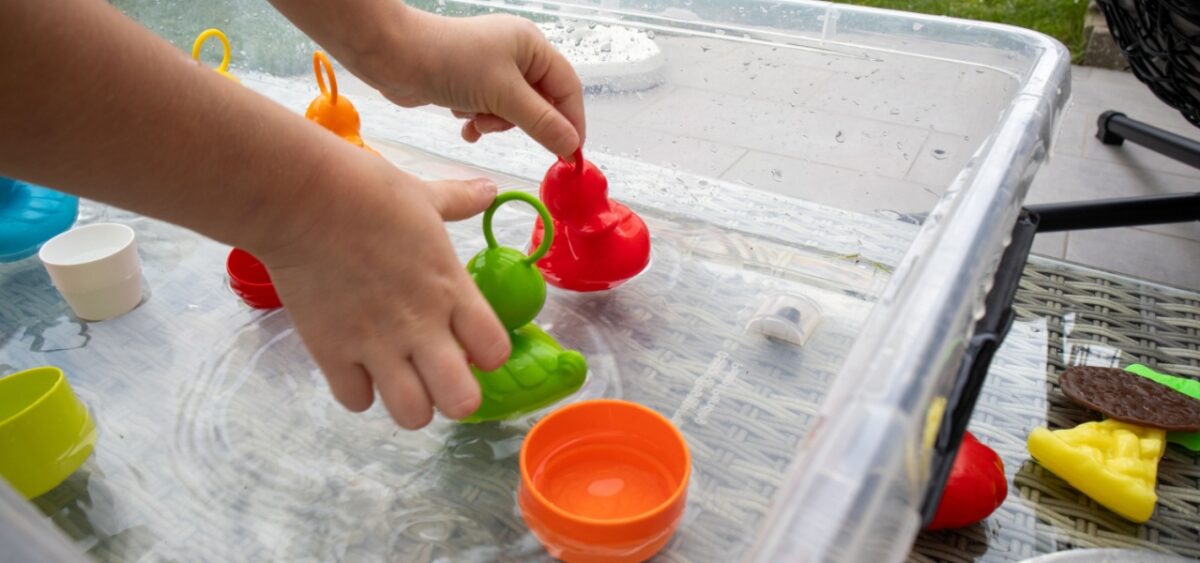
Ideas for a Water Table or Bin
Water of varying temperature, items that float or sink, and toys for measuring, pouring, spraying etc. Try a bin of cool water with plastic ice cubes, toy penguins and seals, and measuring cups, or warm water with a few drops of blue food coloring along with toy fish and squirt toys or plastic water droppers.
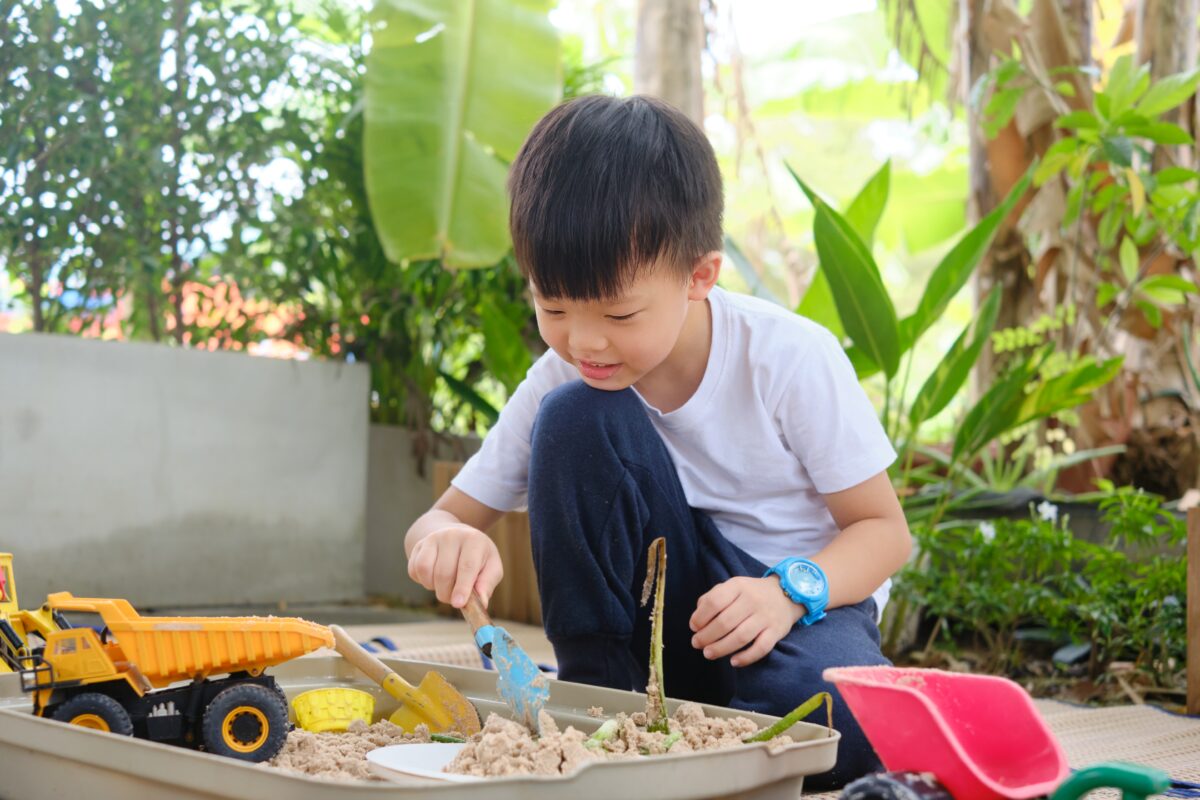
Ideas for a Sandbox or Bin
Play sand or kinetic sand, small toys and other items, and shovels, pails, spoons, or other digging tools. Add some water to change the texture and help kids mold the sand into shapes or towers.
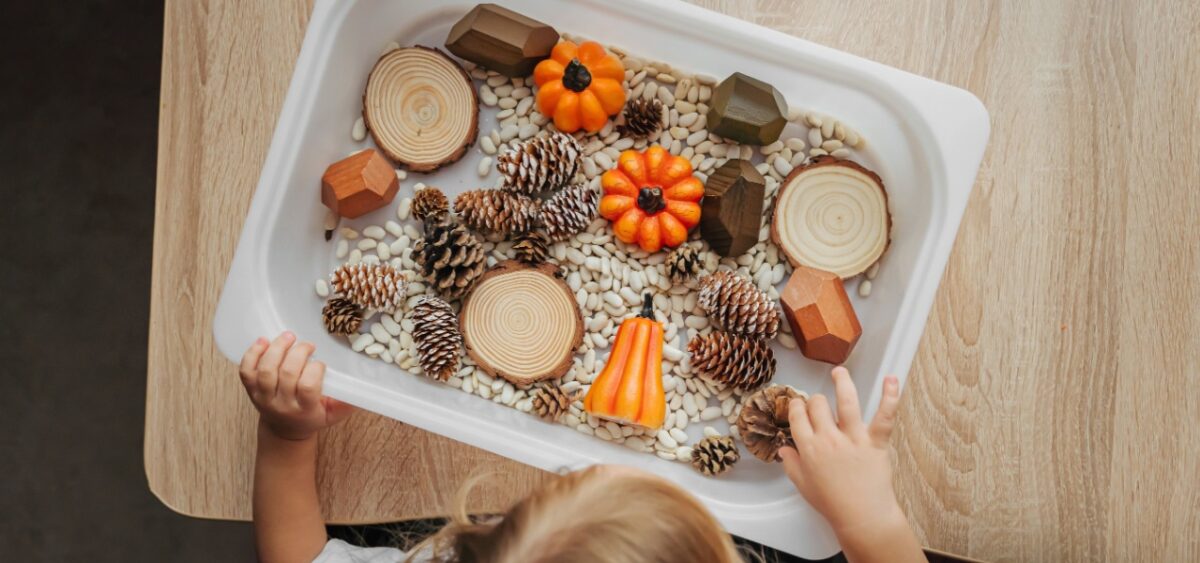
Ideas for Nature Bin
Fill the bin with soil and small rocks, twigs, leaves, berries, pine cones, and/or acorns. Then bury toy animals and use hand-held shovels or rakes to search for them.
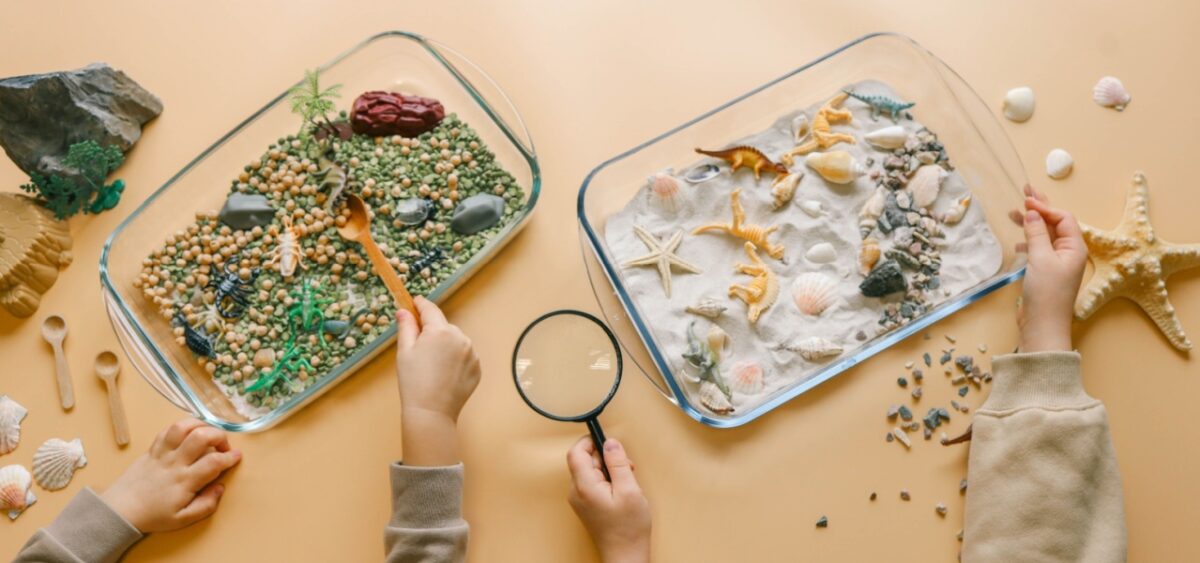
Ideas for an Explorer Bin
Fill a bin with soil or sand and bury toy dinosaurs or dinosaur bones or other artifacts or treasures, like plastic gems and coins. Provide spoons and shovels to help your child dig for buried treasures and specimens.
TIP: There are endless options for sensory bins, including alphabet sensory bins, bins with trucks and diggers, figurines buries in “clouds” (cotton balls), and so much more.
Outdoor Sensory Activities
The great outdoors is absolutely full of stimulation for the senses—try to spend time outside with your child whenever you can. Dance in the rain and splash in puddles, put on some sunscreen and enjoy the warmth of the rays on your skin, crunch through the spicy-smelling fall leaves, or dig and play in the winter snow. Here are some other fun ways to explore the outdoors through sensory play:
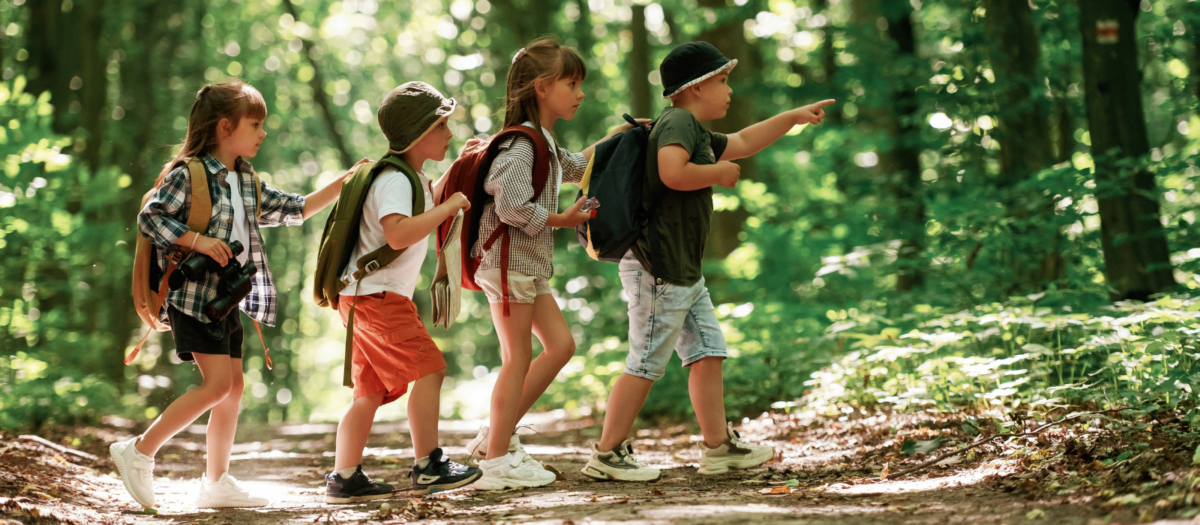
Nature Walk
Head to your favorite wild place and take a stroll, stopping from time to time to identify what you can see, hear, smell, and feel. This is also a good chance for kids to balance along logs, hop over obstacles, and climb rocks or trees.
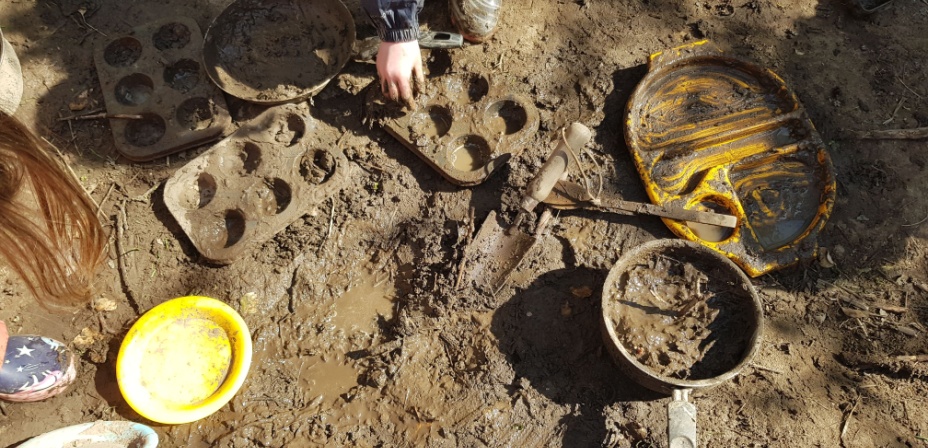
Mud Pies
Embrace the squish of cool mud! Whether you play in a local creek or mix up a bin of dirt and water at home, mud offers unusual tactile sensations. Some kids love it, some kids hate it, but experiencing it is important for brain growth and development.
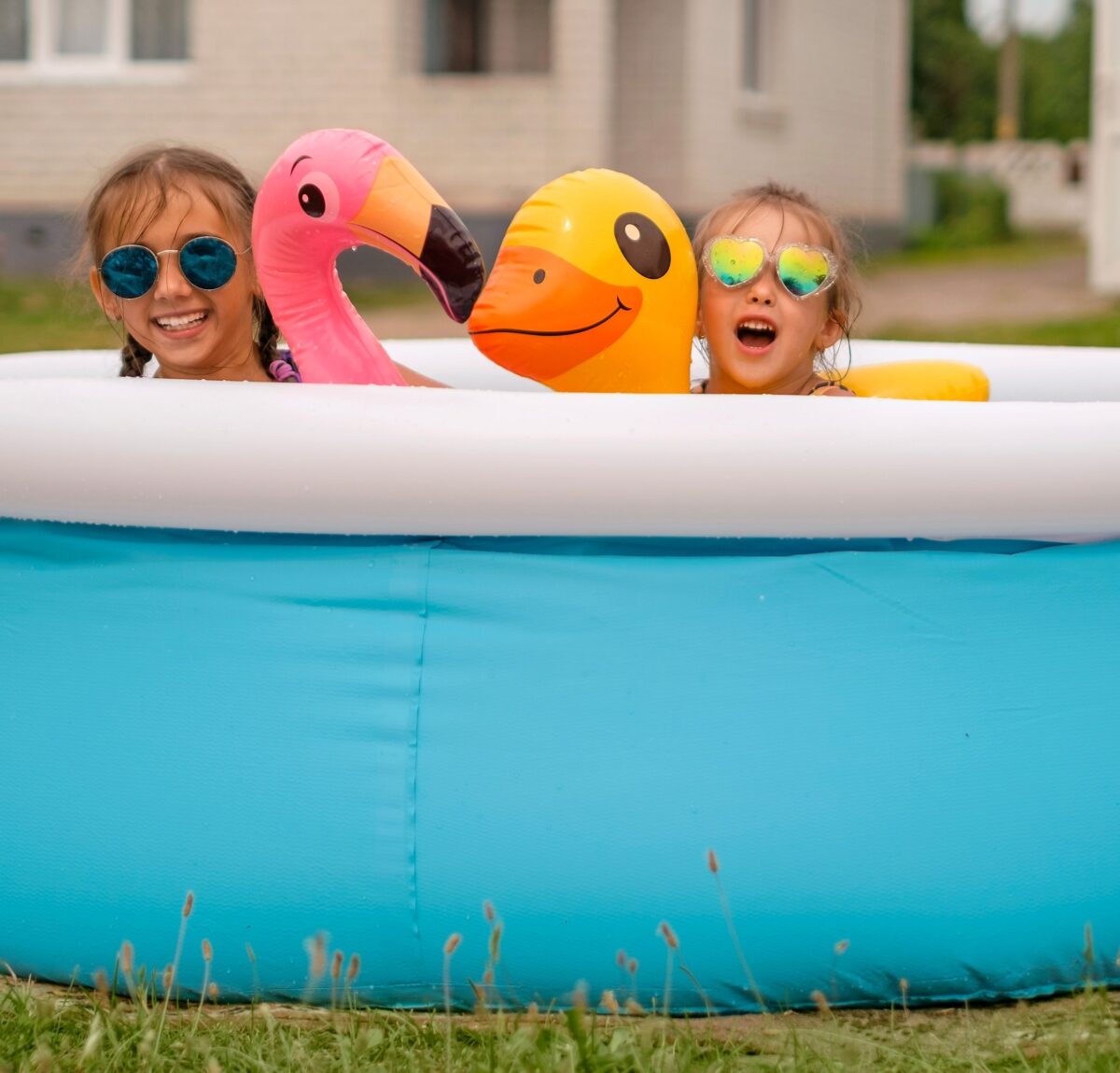
Kiddie Pool
This beloved summertime activity is all about the senses! Feel the water, hear it splash, watch the drops make rainbows in the sun—and that’s before you even bring water toys or cups and pails into the mix. Add taste and smell into the mix by enjoying a popsicle as you loaf around in the water. (Always supervise children around water of any depth.)

Bubbles
Looking for a calming sensory activity? Blow bubbles together; the deep inhales and measured exhales are a form of meditative breathing, and watching the bubbles float away is oh-so-relaxing. Want to make things more exciting? Turn on a bubble machine and some music, and dance around as you feel the bubbles breaking on your skin!
TIP: Find even more outdoor sensory activities with our article featuring 50+ Nature Activities for Preschoolers and our list of outdoor spring activities for kids.
Sensory Art Activities
When it comes down to it, every artistic activity is about the senses. Kid-friendly arts and crafts projects let them experience colors, patterns, textures, scents, and more. Try out these simple art ideas that engage the senses:
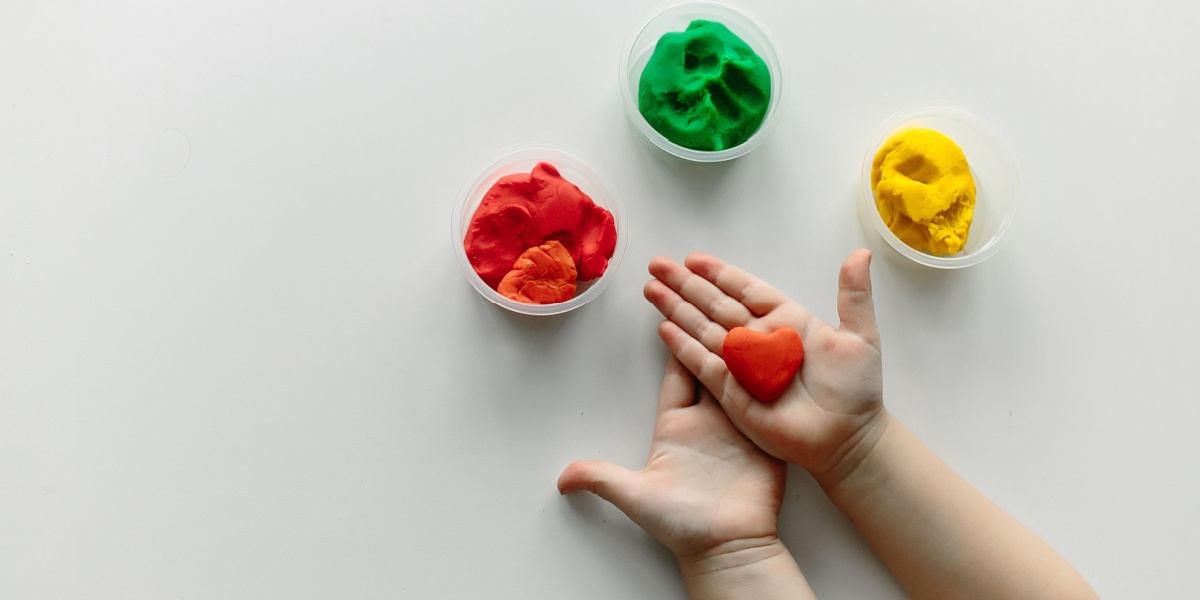
Scented Playdough
You can buy scented dough, or make your own by adding a few drops of essential oils. (Just make sure your kids know that even though it smells good, they shouldn’t eat it.)
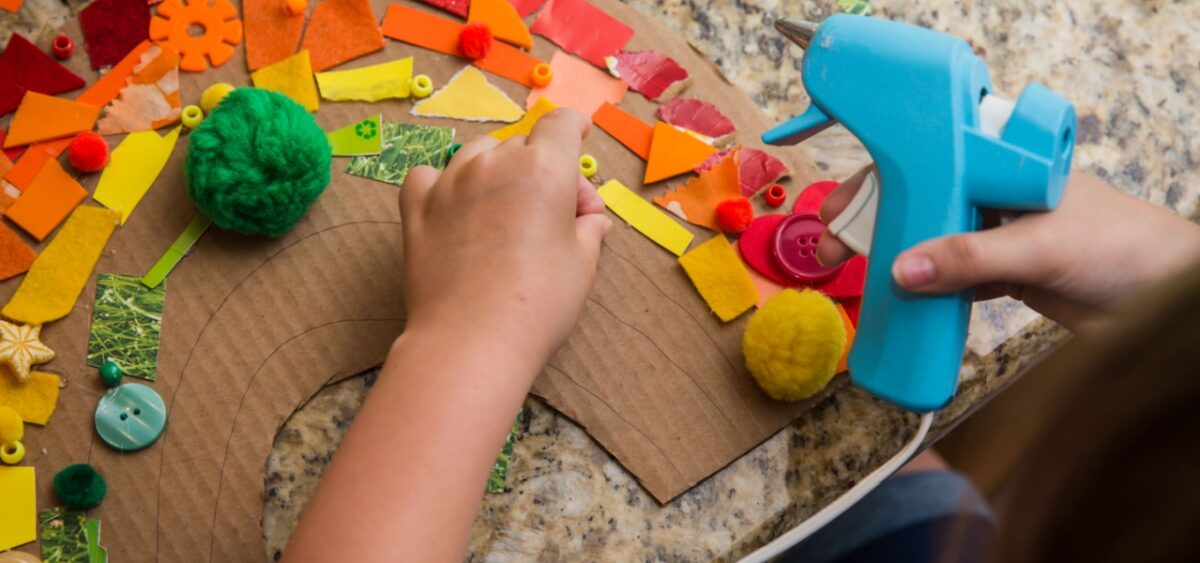
Texture Collage
Gather items of different textures and arrange them in a collage. Include things like sandpaper, faux fur, burlap, yarn, crumpled paper, and more. Hang your collage at child height so they can return to experience it again and again.
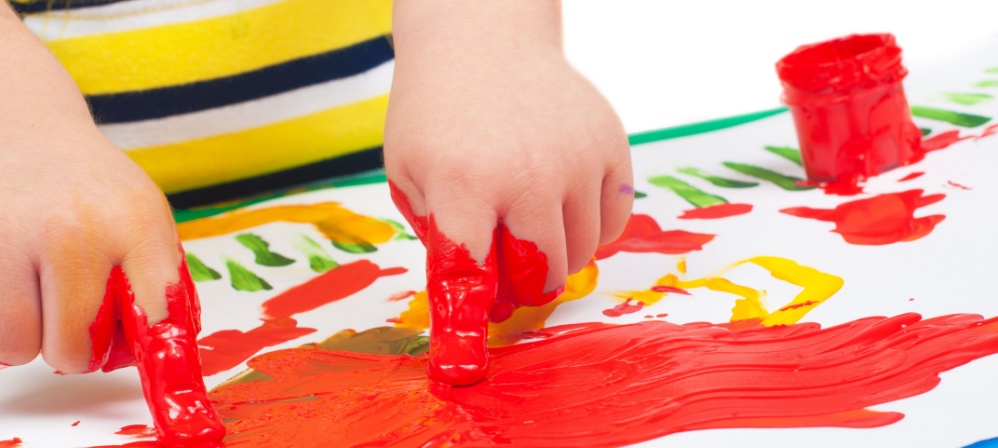
Finger Painting
Here’s another classic childhood activity that’s all about the senses. Encourage your child to consider how the paints feel on their skin, wet and dry. Smell them and listen to the sounds they make when you glop them onto the paper or spread them around.

Snack Art
It’s okay to play with your food sometimes! Sort fruit by color or shape or arrange crackers and cheese to form patterns. Fill a plate with as many colors as you can, and eat slowly to enjoy the textures, scents, and flavors.
TIP: Need another sensory art activity? Try ice painting! Freeze colored ice cubes and use them to paint on paper as they melt. Learn more about ice painting here. Our Alphabet Crafts also feature many sensory-focused activities.
Quiet, Mess-Free Sensory Play Activities
Yes, it IS possible to encourage sensory play without making a mess or a racket! These ideas give parents a break, and are easier on children with sensory processing differences too.

Scent Bottles
Add a few drops of essential oils to cotton balls, then place them in empty shaker bottles. Kids remove the lids and smell what’s inside, trying to identify the fragrance. You can also let them explore the various scents in your spice collection by sniffing the lids.
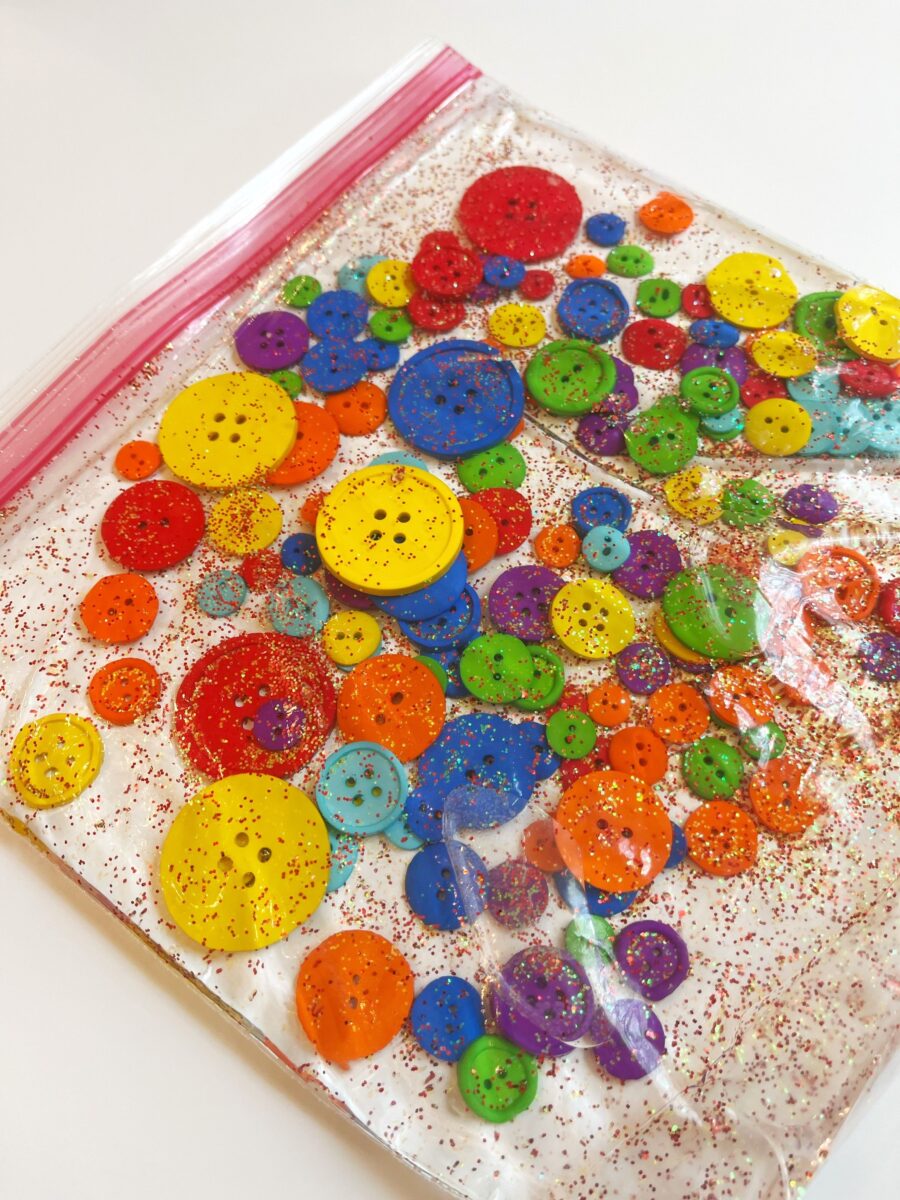
Sealed Bag Squish
Fill a plastic zipper bag half-full with slime, finger paints, water beads, buttons, or any other substance that can be squished or moved around through the plastic. Seal it and add a layer of clear packing tape around the edges for strength. Your child can squeeze and squish the bag, or lay it flat and trace shapes, letters, or numbers.
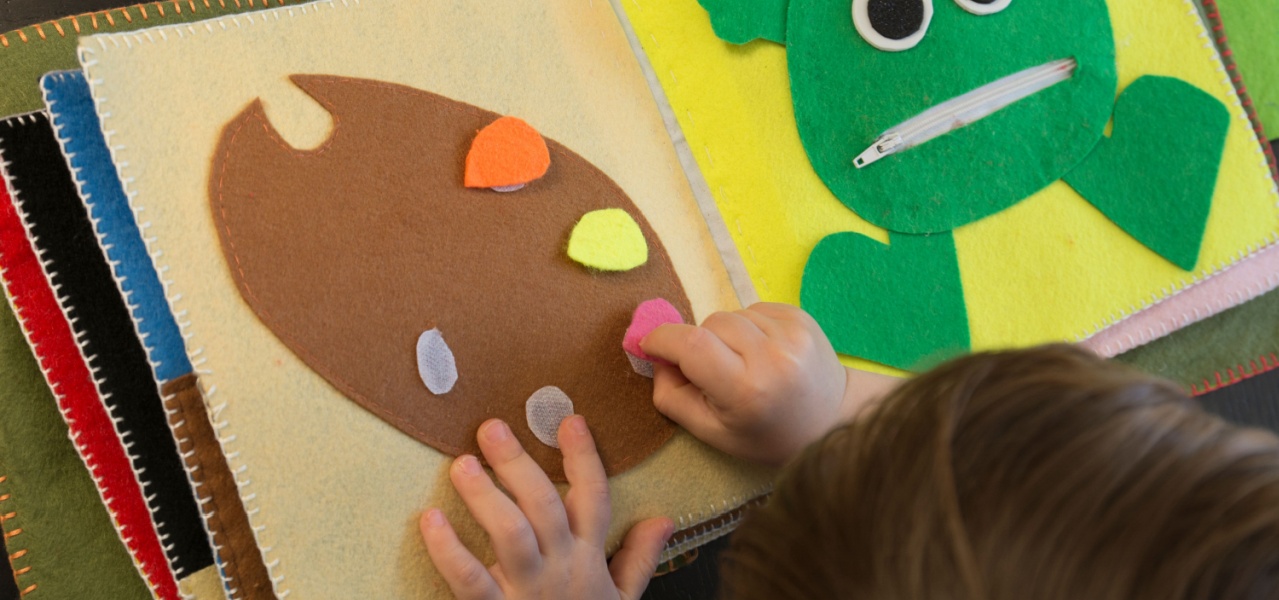
Textured Book
Collect fabric in a variety of textures and sew them together to create a book. You can also buy books purposely made for sensory play, with crinkly pages, tabs to chew on, and fabrics to touch.
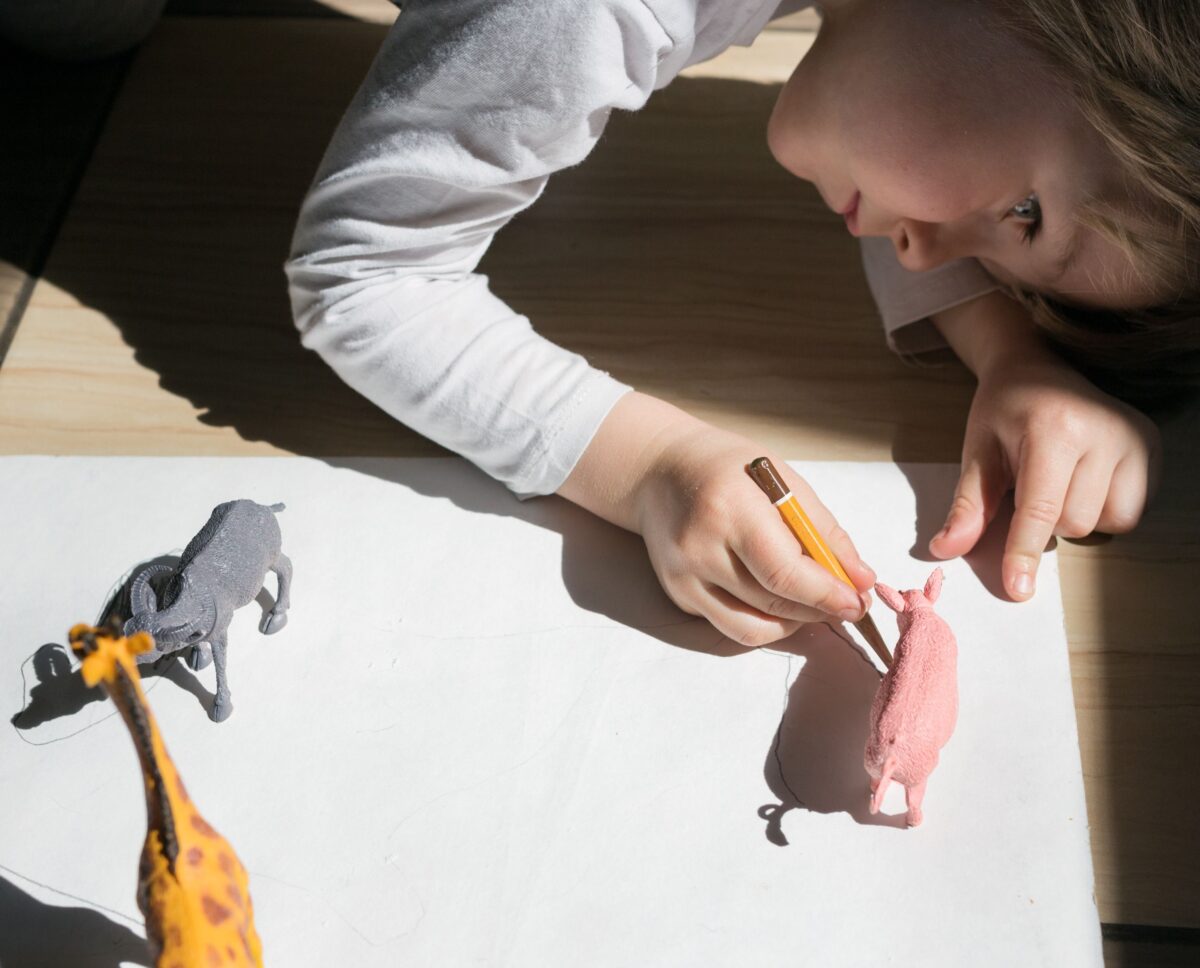
Light Table or Shadow Tracing
A light table is simply a flat lighted surface (you can make your own by placing a string of lights under an overturned shallow plastic bin). Laying various items on top allows kids to play with color, shadow, and the way light interacts with opaque, translucent, and clear objects. You can also have kids set up toys a piece of paper and trace the shadows they create.
TIP: For even more sensory play and learning ideas, check out our free activities articles here!
Tips for Sensory Play
1. Start Simple
You don’t need to invest in a lot of specialized toys or items. Just provide a variety of items, objects, and experiences that allow your child to use their senses. Use sponges and washcloths during bathtime, and compare the difference. Note the different sounds you hear when you eat different foods. Stand in a busy place and identify the smells and sights around you. Let kids balance their way along curbs and help push the shopping cart. All of these are sensory play!
2. Supervise and Guide
As adults, one important way we use our senses is to identify potential dangers and hazards around us—a red surface is often hot, poison ivy will make us itch, sharp things cause pain, etc. Supervise gently as kids learn from sensory experiences, stepping in when safety is a concern—but try not to direct their play too much. The best sensory play is unstructured and child-led.
3. Create Safe Play Spaces
One great way to give your child autonomy in sensory play is by creating a safe environment where they can try things with confidence. That’s one reason sensory bins are so popular: the items included are those that are unlikely to cause harm. Add mats to playroom floors to protect against tumbles, do messy activities on washable surfaces, and teach your child common-sense safety rules.
4. Engage Multiple Senses
If you’re planning specific sensory activities, try to find ways to include multiple senses. For example, if you’re playing with playdough, try adding essential oils for scent, mix-ins like sand or small pebbles for texture, and a variety of colors too.
5. Encourage Descriptive Language
As you and your child play, use descriptive words and invite them to do so too. “Ooh, this feels slimy and cold, but I think I like it! What do you feel when you touch it?” or “This sauce is salty, but it’s also a little sweet. What do you taste?”
6. Include Movement
Sensory play should include opportunities for vestibular (balance, movement, and spatial orientation) and proprioceptive (the body’s sense of movement and position) development too. Jumping, spinning, hopping on one foot, and balancing on a small box are sensory play; so is learning to ride a bike or scooter, swimming, and playing catch.
7. Respect Sensitivities and Preferences
Some children are naturally more sensitive or may have sensory processing disorders. But all of us have certain sensory experiences we just don’t like—maybe you just can’t stand touching slimy things, or the sound of chewing drives you nuts. Respect your child’s preferences, and support exploration without pressure. Encouragement is good; forcing unfamiliar sensations can backfire, especially with sensory-sensitive kids.
8. Rotate Materials Regularly
We can become accustomed to sensory experiences very quickly—think about how you’re able to tune out the sound of the neighbor’s lawn mower or don’t even notice the beautiful flowers in a garden you pass through eight times a day. When you regularly offer new experiences and materials, your child will continue to experience the new stimuli that encourage proper brain development.
9. Work Clean-Up Into the Routine
Sensory play can be messy! And while that’s just fine, it also means there’s clean-up to do afterwards. Make sure your child gets into the habit of helping out with the mess. Even very little kids are able to wipe things with a cloth or put playdough back into its containers. Keep kids involved in sensory play from start to finish for the most meaningful experiences.
10. Combine Sensory Play with Mindfulness
When we feel overwhelmed, that’s often because our senses are overloaded in one way or another. Sensory play can actually promote emotional regulation by helping us identify how we’re feeling, and why we’re feeling that way. Try the five senses meditation: Stop where you are and look for 5 things you can see, 4 distinct sounds, 3 things you can feel (like the breeze on your skin or the floor under your feet), 2 things you can smell, and 1 you can taste (even if it’s just your own saliva).
Sensory Play Tips for Children With Sensory Processing Differences
There are a variety of ways that people process sensory experiences differently. Some children may be easily overstimulated by noise, touch, or movement, while others may seek intense sensory input in ways that don’t fit the setting, such as constant spinning or chewing on non-food items.
When it comes to sensory play for all types of children, the key is to be flexible and responsive. Remember, a child’s sensory needs can change from day to day—what’s comfortable one time may feel overwhelming the next. These tips may help, but it’s also recommended to consult a professional in the field:
- Go slowly at first. Limit the sensory play to one or two new experiences, introducing them gradually. For example, with new textures, let children touch them first with a stick or a gloved finger before using their bare hand.
- Offer control and choice. “Would you like to taste the spice, or do you just want to smell it for now?” Respect their refusals, and demonstrate the behavior yourself instead. “You don’t want to touch the worm? How about I touch it and tell you how it feels? It feels a little slimy, but also smooth, and it wriggles!” If child declines something, remember that opting out isn’t necessarily a setback—it could be them learning to recognize and communicate their needs.
- Note and limit challenging sensory experiences. Some kids have no trouble sticking their hands into a bucket of slime, but hate loud noises. Others love fireworks, but don’t like to be touched. Ask your child to describe how various forms of sensory play make them feel, and don’t force them into experiences that could cause them to feel overwhelmed.
- Explain what to expect. “We’re going to use this new playdough. It has some sand mixed in, so it will feel a little rough, and it smells like cinnamon, just like your favorite cookies.” This gives kids a chance to prepare and opt out if they need to.
- Don’t judge. No one can know exactly how a sensory experience affects someone else. If your child tells you the music is too loud or the colors are too bright, respect their feelings and thank them for sharing. If you can’t alter the situation itself, ask your child what might make it easier for them. “It is pretty loud in here—thanks for telling me that it makes your ears hurt. Do you want to put your hands over your ears until it’s over?”




